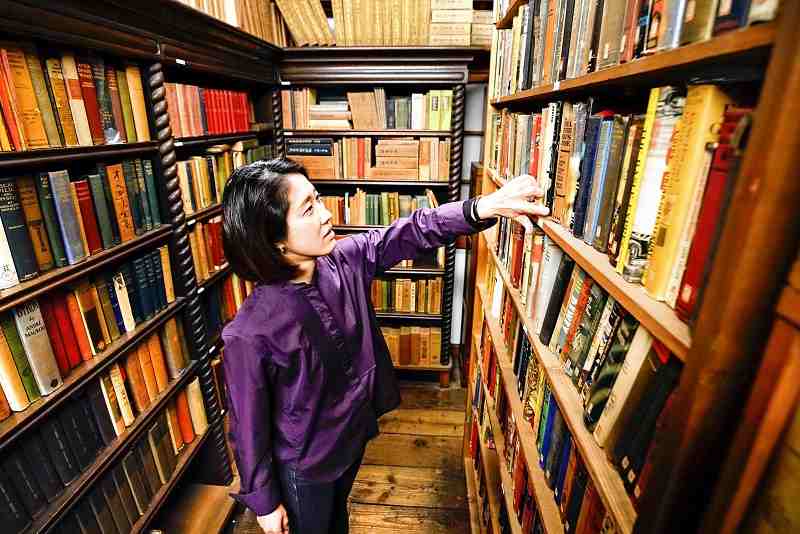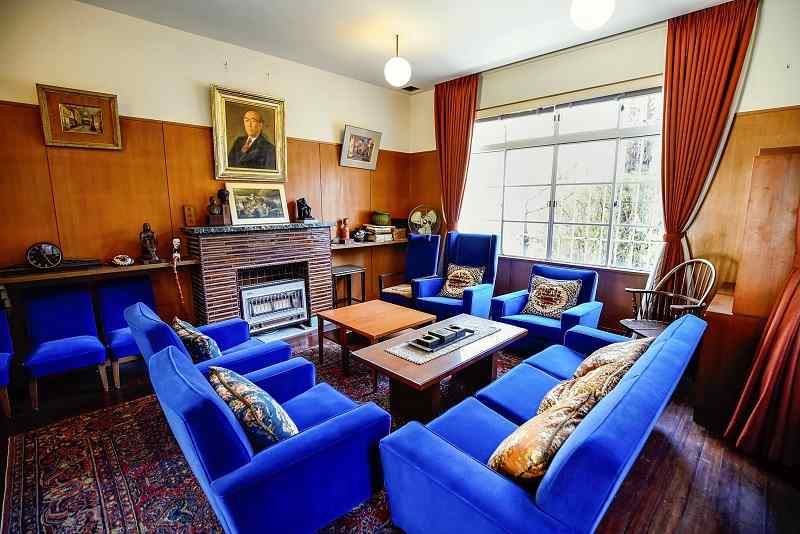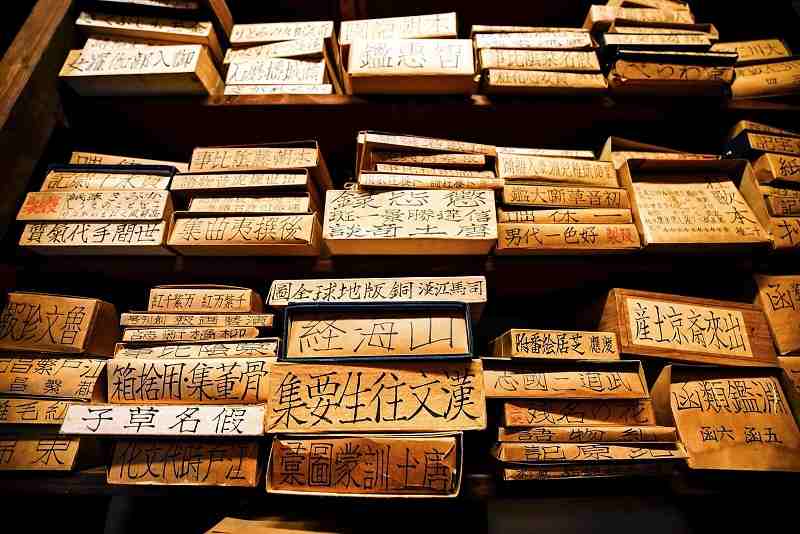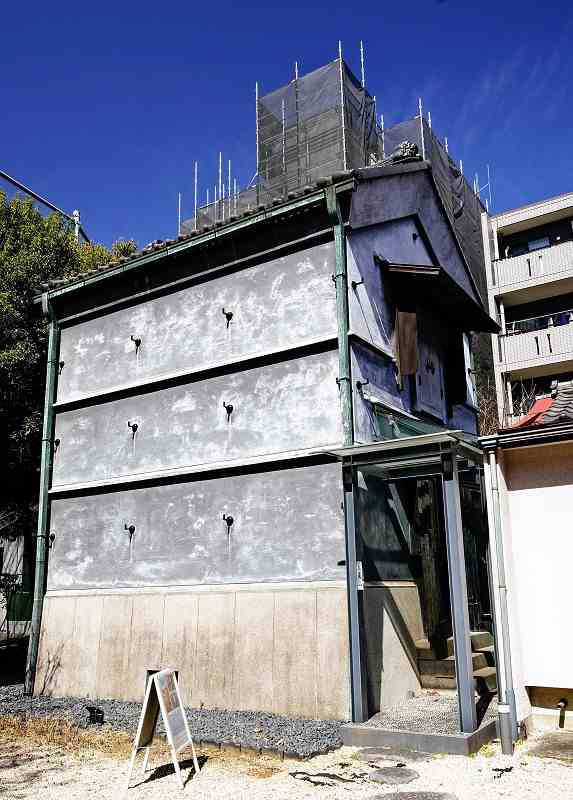
The storehouse at the Edogawa Rampo Residence in Tokyo’s Toshima Ward is filled with the writer’s books.
17:31 JST, May 10, 2022
The Edogawa Rampo Residence in Toshima Ward, Tokyo, is where famed mystery novelist Edogawa Rampo (1894-1965) lived out the final 31 years of his life.
After constantly moving house — 46 times in total — the writer, who laid the foundation for Japanese mystery novel writing, rented the building for ¥90 per month before purchasing it.
Visitors to the dwelling are greeted by a nameplate on the gatepost that reads “Taro Hirai,” the writer’s birth name. His pseudonym, of which the Japanese pronunciation was formed to resemble the name “Edgar Allan Poe,” is a tribute to the American writer, widely considered the originator of the mystery genre.
The wooden house and a dozo storehouse, both erected in the Taisho era (1912-1926), are located on a site of more than 1,000 square meters that sits next to the Rikkyo University campus in Tokyo’s Ikebukuro district.
Much of the area was burned to the ground during a major air raid in April 1945, but the buildings miraculously survived the resulting fires.
In 1957, a Japanese-style room that had belonged to Rampo’s mother, was torn down, and a Western-style two-story wooden house, designed by Rampo himself, was added.

The living room was used as a gathering place for mystery writers.
Some of the author’s favorite items, including a desk, an armchair and a walking stick, remain in the living room on the first floor.
The plastered storehouse is filled with mystery novels and criminal psychology books from Japan and abroad.
Rampo’s collection, including those in the main building, consists of 13,000 domestic books, 2,600 Western books and 5,500 magazines, which were labeled and methodically organized in a library style.
“Rampo devoted his earnings to books, and he read all of them,” said Misato Niwa, 46, a part-time lecturer at the university’s faculty of letters. Niwa was involved in the efforts to organize the novelist’s Japanese books during her time as a graduate student.
On the second floor of the storehouse are boxes containing Japanese books, such as “The Life of an Amorous Man” by Ihara Saikaku, and some of Rampo’s own works, including “The Fiend With Twenty Faces” and “Vampire.”

Boxes of Japanese books bearing titles handwritten by Edogawa Rampo
The Japanese book titles appear handwritten on the boxes, giving the impression that the artist was particular about details.
Legend has it that he did his writing in his storehouse under candlelight, but in actuality, he seems to have worked in a room next door because he was sensitive to the cold.

The storehouse is open to the public, with the books being visible through a glass partition.
“Rampo is often associated with the worlds of eroticism, grotesquerie and nonsense, but I want people to discover a different side of him [through a visit to the residence],” Niwa said.
Edogawa Rampo Residence
In 2002, Rikkyo University acquired the former residence of Edogawa Rampo along with his collection of books, manuscripts, letters and other materials. The storehouse was designated as a tangible cultural property by Tokyo’s Toshima Ward in 2003.
Address: 3-34-1 Nishi-Ikebukuro, Toshima Ward, Tokyo
Hours: 10:30 a.m. to 4 p.m. Open on Wednesdays and Fridays except for national holidays and the special exhibition day.
Admission: Free
Related Tags
"Features" POPULAR ARTICLE
-

Sanrio to Open Museum in Yamanashi Pref. Dedicated to Founder, Exhibits Include Hello Kitty, Other Characters
-

Autumn Foliage Surrounds Visitors to Tokyo’s Showa Kinen Park
-

My Daughter No Longer Speaks to Me, But I Want to See Her and My Grandchild
-

Kumamoto: Public Bath Refurbished as Library Where You Can Chat, Take Photos
-

Frozen Vegetables: Demand Rises for Convenient, Tasty Domestic Produce
JN ACCESS RANKING
-

Tokyo Economic Security Forum to Hold Inaugural Meeting Amid Tense Global Environment
-

Keidanren Chairman Yoshinobu Tsutsui Visits Kashiwazaki-Kariwa Nuclear Power Plant; Inspects New Emergency Safety System
-

Imports of Rare Earths from China Facing Delays, May Be Caused by Deterioration of Japan-China Relations
-

University of Tokyo Professor Discusses Japanese Economic Security in Interview Ahead of Forum
-

Japan Pulls out of Vietnam Nuclear Project, Complicating Hanoi’s Power Plans

























